12.06
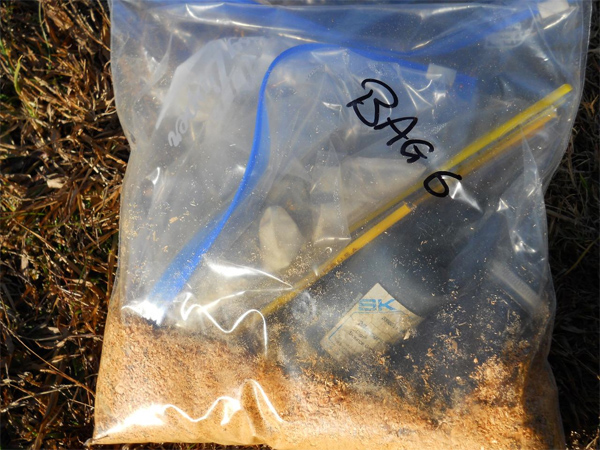
In mid-November LaFayette residents began to learn of a dangerous mercury spill happening at LaFayette High School almost a month earlier. In short, LHS students and faculty members, along with their families and other county students, were unknowingly exposed to potentially dangerous amounts of a toxic substance for more than three weeks. The school has finally begun to admit some of what happened, but their lack of transparency, delayed response, and blatant attempts to hide what happened made the problem much worse than it would have been otherwise.
Because of the school’s foot-dragging and evasiveness there are a lot of rumors and questions about the mercury spill that remain unanswered – something we’ll attempt to address by looking at the school’s minimalist press release, official statements from the EPA, news reports, and some first-hand reports from Underground sources.
But first, a bit about mercury itself:
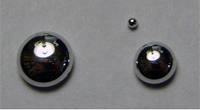 Mercury is an element most notable for being the only metal that exists in a liquid state at room temperature, remaining fluid down to -36°. Mercury is a relatively rare material, but its unique properties make it easy to mine and purify. Those same unique properties also make mercury the most toxic non-radioactive element on earth.
Mercury is an element most notable for being the only metal that exists in a liquid state at room temperature, remaining fluid down to -36°. Mercury is a relatively rare material, but its unique properties make it easy to mine and purify. Those same unique properties also make mercury the most toxic non-radioactive element on earth.
Even though pure elemental mercury is liquid, its high surface tension keeps it from wetting items it touches. Mercury can be gradually absorbed through the skin after prolonged contact, but the biggest danger is from fumes generated during evaporation. Mercury vapors, once breathed in, are almost immediately absorbed into the bloodstream where they can build up and damage the brain, heart, kidneys, and other vital organs. Mercury mixed with water can also form poisonous methylmercury. Water pollution has contributed to methylmercury being found within almost all seafood, but usually in trace amounts that the body can handle.
 As far back as 1,500 BC, mercury was included in wealth buried with Egyptian kings, and was first used for commercial purposes about 500 years before the birth of Christ. Early uses included cosmetics, ointments, and decoration. Scientists for many years mistakenly thought mercury could be changed into gold or silver if combined with the right ingredients (the science of “alchemy”). In latin, mercury was known as hydrargyrum, or liquid silver, and for many years called “quicksilver” because of its texture and appearance.
As far back as 1,500 BC, mercury was included in wealth buried with Egyptian kings, and was first used for commercial purposes about 500 years before the birth of Christ. Early uses included cosmetics, ointments, and decoration. Scientists for many years mistakenly thought mercury could be changed into gold or silver if combined with the right ingredients (the science of “alchemy”). In latin, mercury was known as hydrargyrum, or liquid silver, and for many years called “quicksilver” because of its texture and appearance.
Through the centuries men have used mercury for a wide number of processes and products, such as mirrors, felt production, gold and silver mining, wood preservatives, dental fillings, toothpaste, in medicines like mercurochrome, and eventually as a key part of electronic switches, photo film, batteries, thermostats, and thermometers. Despite the element’s suspected dangers, industrial growth and scientific demand led to mercury being found in virtually every American home and business by the 1950’s.
Even before the dangers of elemental mercury were known, individuals working around large quantities of the material on a regular basis often experienced a decline in health. In the mid-1800’s English hat makers went “mad as a hatter” with neurological disorders caused by regular exposure to mercury vapor in unventilated workspaces. Despite the obvious impact, real concern over the material’s toxicity wasn’t seen until after World War II when a Japanese company dumping mercury waste into its local water supply caused 2,200 people to die or go retarded.
Studies done after that incident began to show a connection between mercury and mental illness, autism, cerebral palsy, cancer, adult dementia, kidney problems, immune system disorders, and birth defects. Increased awareness led to mercury being phased out of many products during the last half of the 20th century. In 2009 and 2010 Sweden, Norway, and Wisconsin banned most mercury-containing products outright and a similar measure for the entire country was recently proposed (but not passed) in congress. Many states (not including Georgia) have restricted or banned at least one mercury-containing product.
Today mercury-based medications have gone the way of the dinosaurs, mercury-silver amalgam fillings are still legal but generally being phased out, and mercury thermometers are increasingly rare. Most mercury is now found in florescent lighting (including government-mandated CFL “curly” bulbs), as a preservative in certain vaccines (which may have links to autism), and in pollution-exposed seafood.
As the dangers of mercury became more widely understood, schools across the country began disposing of products containing the material. Most accessible mercury in schools was found in science labs, and much of that had been there for decades. Several states and cities conducted organized drives to collect and properly dispose of outdated and dangerous high school lab chemicals including mercury and bromine. In states like Georgia, which conducted no such organized collection, disposal was left up to school boards, school administrators, or even individual teachers. Even now some faculty members remain unaware of how dangerous certain science lab chemicals can be, and others who do know haven’t gotten rid of them because they aren’t sure how to.
Which brings us to LaFayette High School in late October:
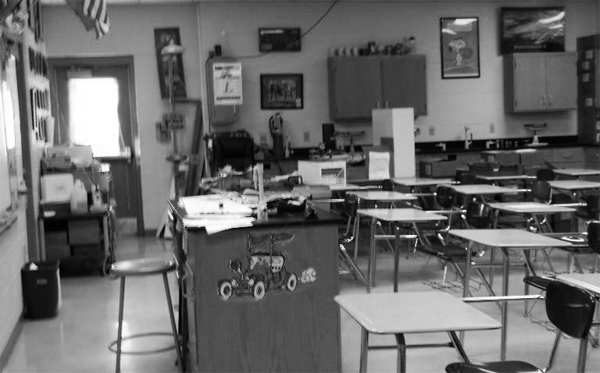
On Wednesday the 20th or Thursday the 21st, during busy homecoming week, several student took a container of mercury from a science lab storage room. (We have no word whether or not the closet is normally locked.) According to students (and later confirmed by a school board member), the lab was being supervised that day by an unidentified substitute teacher. The teacher was apparently unaware of what was going on in the classroom since quite a bit of mercury ended up being poured down the lab’s sink drain, after which at least one student from the class carried the remainder home in his book bag.
In a short period of time at least four different students had possession of the stolen mercury, taking the container from school to home and back again inside their bags. Motives for the theft are unclear, but probably stem from some combination of the same things that cause most teenagers to commit crimes: boredom, lack of supervision, peer pressure, or lack of clear thinking. And as the ancient Egyptians discovered, mercury IS pretty cool to see and touch – at least until you find out how toxic it is.
Involved students apparently decided to see and touch their illegally procured element all over the LHS campus. Investigators found high levels of mercury on concrete outside the cafeteria, in the original science lab sink, in a boys’ restroom, and within mobile classroom #2 where several teens observed it being played with during class time. That mobile unit, the only carpeted area involved, had measurements so high investigators detected mercury while standing outside an open window. Mercury residue was also found in a janitor closet where the stolen containers and contaminated book bags were stored after the school confiscated them.

Contamination wasn’t just limited to LaFayette High School. Investigators also did studies within four local residences frequented by involved students and the home of at least one faculty member. Three of those homes were found to have elevated levels of mercury and one residence – a LaFayette Housing Authority apartment on McLemore St. occupied by the great-grandmother of a 14-year-old LHS student – had levels high enough to require decontamination.
That 14-year-old displayed signs of mercury poisoning and required hospitalization. Walker County School Board member Jim Smith (the only school employee besides official spokeswoman Elaine Womack to make a public statement about the spill) admitted one student was hospitalized, but downplayed the risk by saying “some people, just from eating fish, have that level of mercury in their body.” Friends of the hospitalized student, in contrast, tell us he required transfusions and procedures described as “similar to chemotherapy” to remove the mercury from his bloodstream – not quite the level of mercury one might expect from normal seafood consumption. (To our knowledge that one child is, fortunately, the only student made sick from mercury exposure.)
On Tuesday November 9th, nearly three weeks after the theft, an LHS student contacted The LaFayette Underground through Facebook and mentioned a mercury spill closing down a boys’ restroom and one classroom in the 700 hall at LHS. That student mentioned books being thrown away and several students being hospitalized as a result of mercury exposure. We didn’t know what to make of the tip and posted a question to LU Facebook: “Anyone hear something about an LHS student poisoned today in a science lab..?”
That status received few responses, and most of those who replied had heard nothing of the incident. Like all rumors received, we tried to track down more information but decided not to do a full report on it at the time because there seemed to be little to report and none of the LHS students who noticed something wrong knew exactly what was going on. (However, that said, we did have something on Facebook before anyone else. If you’re not an LU Facebook fan you’re missing a lot.)
There’s some disagreement about when school officials actually became aware of the mercury theft and subsequent spills. Environmental Protection Agency reports say the school had knowledge of the theft within a day of its occurrence but chose to have school staff clean up the material and purchase test strips to check for it around the school. Administrators claim they “attempted to contact EPA” throughout that process, but supposedly got no response until the contaminated carpet was found in mobile classroom #2 on November 11th, some 21 days after the spill originally occurred. That raises serious questions about just how early the school knew what had happened and how many days they knew before doing anything substantial about it.
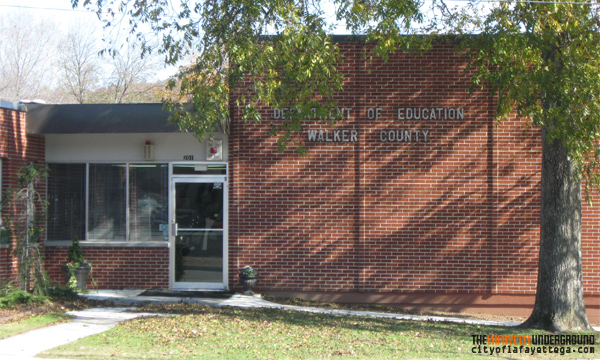
A conflicting account in The Walker County Messenger says a local doctor called Northwest Georgia Public Health on November 3rd regarding a patient with “elevated levels of mercury” in their blood. Per the Messenger report, Public Health in turn called Walker County Schools and spoke with Superintendent Melissa Mathis, who (by several independent accounts) had not heard about the spill before that point. Mathis was reportedly advised by that agency’s nurse manager to contact the EPA, but she apparently chose to wait a week before doing so.
Meanwhile, like flu patients spreading germs, the four original students spread mercury onto every surface they touched, and others touching those surfaces spread it further still. Students with classes in the mobile unit got mercury on their shoes, which was then tracked into other classroom areas and at least four school buses, putting elementary and middle-school students in contact with the material since students of all ages ride most county buses at some point during the school day. (EPA photos identified bus number 49.)
Finally on November 11th EPA contractors arrived and began screening the LHS campus for mercury; testing classrooms, common areas, busses, and even students’ shoes for the toxic substance. But even after teachers were notified and scientists in hazmat suits converged on campus, the school issued no formal warnings, no press releases, no notes to parents, and didn’t even talk to students who might have been able to help stop the material’s spread. That shows the school had no intention of EVER telling the public what had happened, and still wouldn’t have without a concerned parent contacting Chattanooga media.
On Friday November 12th news of the mercury spill finally surfaced in a brief report on Channel 3. The 11 PM news story was thin on detail, essentially saying there had been a mercury spill at LHS which was being investigated by the EPA and resource officer Billy Mullis. A reporter spoke with Assistant LaFayette Police Chief Bengie Clift, who added nothing to the story beyond a warning not to mess with dangerous substances. School district spokeswoman Elaine Womack then confirmed the spill but said it was “a small amount.” Channel 3 also said, mistakenly, the spill had happened that day – leading to speculation about multiple incidents.
A report with few details and a mistake is understandable considering how little information or cooperation the school provided; Channel 3 said employees at the school refused to comment and “wouldn’t even acknowledge that we were talking to them.” Womack’s statement to the station’s reporter was also lacking in detail, but was the first official admission of a problem at the school – 22 days after the original theft occurred. (Walker Messenger reporters had similar problems getting anyone to make a statement, delaying their eventual report by almost a week.)
That following Sunday, November 14th, LaFayette High School finally issued a press release confirming the mercury spill. That release updated Channel 3’s original report, was picked up by other Chattanooga media outlets, went on the LHS Web site, and was eventually sent to students’ parents in a letter several days before Thanksgiving break. Kids being kids, many parents never got the letter – and those who did still didn’t know very much because the release is a textbook example of using five paragraphs to say almost nothing.
From LaFayette High School, 11/14/2010:
- “Walker County Schools, LaFayette High School and the U.S. Environmental Protection Agency (EPA) are diligently addressing the mercury incident that recently occurred on campus. An ongoing investigation has revealed the need to assure parents and students that the safety and security of both students and staff is of highest priority and will be assured.”
“Relying on the information available, the Walker County Schools System operated under all protocol and federal guidelines in the clearing and securing of all affected areas of the school.”
“According to Matthew Huyser of the EPA, the Walker County School System has ‘handled the situation intelligently, seeking and following federal guidelines with prudent and systematic approach. The Walker County School System has taken a proactive, precautionary measures to minimize exposure.'”
“The EPA has determined that all the right steps have been taken regarding this incident, but Walker County Schools will continue to monitor areas until the situation has been completely resolved.”
“For more information concerning mercury, contact the Walker County Health Department at 706-638-5577 or the Agency for Toxic Substances and Disease Registry at 888-422-8737.”
And that’s essentially it. The only, and final, official statement from the school. In essence: there was an incident of unspecified scale and scope, the school handled it, you don’t need to worry about it, and if you have any questions call the health department not the school.
That was small comfort for the concerned parents of LHS students who had been trying to decide if their children were safe at school. The school’s month-long delay; refusal to say how, when, or where on campus the mercury spill had occurred; and apparent confusion about how much had actually been stolen in the first place led many to wonder if their child should stop attending class or be checked out by a doctor.
 The daughter of one faculty member, a child under the age of two who spent time after class in the contaminated mobile unit, was provided with a free checkup after she began showing possible signs of mercury poisoning and her parents threatened legal action. (Her test thankfully came back negative.) Meanwhile parents of students were denied such accommodations, continually referred to the Health Department, and told that “an amount less than two tablespoons isn’t considered dangerous” even though nobody to this day is sure exactly how much mercury was stolen in the first place.
The daughter of one faculty member, a child under the age of two who spent time after class in the contaminated mobile unit, was provided with a free checkup after she began showing possible signs of mercury poisoning and her parents threatened legal action. (Her test thankfully came back negative.) Meanwhile parents of students were denied such accommodations, continually referred to the Health Department, and told that “an amount less than two tablespoons isn’t considered dangerous” even though nobody to this day is sure exactly how much mercury was stolen in the first place.
So, to recap: school officials claimed knowledge of the spill from day one yet waited three weeks to contact the proper authorities about cleaning it up; waited an additional week to confirm anything to the media or student’s parents (only doing so after someone leaked the story to Channel 3); never contacted the parents of elementary and middle-school students potentially exposed to mercury while riding the four contaminated buses; and still haven’t publicly admitted to everything they know about the mercury spill. That all adds up to a “cover-your-ass” strategy designed to protect the school and involved faculty from potential legal action regardless of the impact on student health.
It didn’t have to be that way.
A 2009 incident in Arizona began under identical circumstances: an inattentive high school science teacher allowed two students to steal several containers of mercury, which they then spread all over the school campus and carried home. But in THAT case school officials were made aware of the spill within two days, immediately called the EPA, and closed down school until they knew students were safe. That same weekend every student potentially exposed to the mercury was contacted and asked to turn in clothing and school items that might have been contaminated.
Another smaller incident last December in Lexington, Georgia had a similar response. School officials found out a student brought mercury onto campus on a Thursday, closed down the school the next day and canceled a basketball game over the weekend while contractors checked and cleaned the entire school. The risk to students was minimized and the whole thing was cleaned up in a matter of days, not weeks and months.
In Arizona the school system also called for a full-blown police investigation into the theft, where LaFayette High School has so far chosen to leave it in the hands of resource officer Mullis and school officials.
From Walker County Messenger, 11/18/10:
- “As of Wednesday afternoon, Nov. 17, LaFayette police had not been contacted to conduct an investigation into the matter, police chief Tommy Freeman said, as the school’s internal investigation continued.”
The school hasn’t requested a formal criminal investigation into the incident and the LPD won’t conduct such a check on its own, because the school system and City of LaFayette both share the same attorney: school spokeswoman Elaine Womack’s husband Ron. (This conflict of interest is also what allowed LHS coach and LaFayette City Councilman Norm Hodge to avoid punishment when he was caught drinking alcohol during a football game two years ago.)
The Arizona district also punished both of its involved teachers (one who introduced mercury to the classroom and one who let students carry it away) by transferring them to a lesser school and demoting them. Walker County Schools, by contrast, has not identified the substitute teacher involved and very likely never will.
Parents of students attending the Arizona school complained about administrators reacting slowly and not fully communicating with them, but those folks are fortunate to have only had a three day delay. If their children attended LaFayette High School the delay would have been nearly a month long, and they might to this day not know exactly what happened.
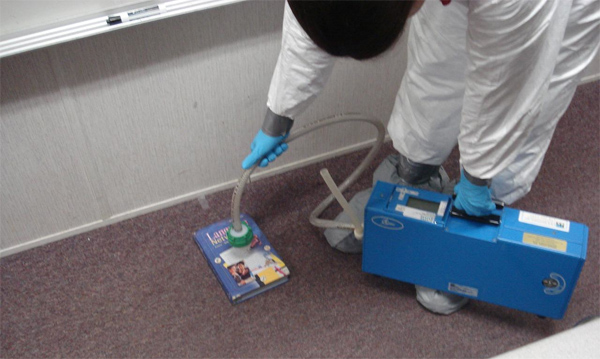
On Saturday November 20th, one month to the day since the mercury was first stolen, LaFayette High School was “quarantined” as workers began cleaning up the affected areas. EPA-approved contractors were ready to move in a week earlier but authorities decided to postpone cleanup until the school was closed for Thanksgiving break to keep students from further exposure – one of the few good decisions made during this whole process.
For minor mercury spills the typical method of cleanup is to raise the temperature in an affected area to speed evaporation and then vent out the contaminated air. In most cases that’s sufficient to decontaminate the space, with permeable material like carpet, curtains, cushions, etc. washed or replaced. However, if the vented air shows extremely high levels of contamination more clean-up is required; In Arizona several affected classrooms had to be gutted to their studs and rebuilt over summer break.
Apparently the contamination at LHS was less severe, and students report every classroom was reopened last week. But regardless of the work done or current status of the contaminated areas, we guarantee LHS will never issue another statement to let parents, students, or anyone else in the community know exactly how much had to be done, how many students were potentially exposed, or how much this whole mess will ultimately cost Walker County Schools, LaFayette Housing Authority, or the county’s taxpayers.
Hopefully Walker County Schools will learn a few things from this incident and make changes that can actually benefit the system and its stakeholders.
The first change, which is probably already happening, is a revision in how the school system trains science teachers and manages science lab materials. Regular and substitute teachers alike should be required to know the dangers and properties of every chemical in the science lab and get hazmat or chemical spill training on a regular basis before being allowed into the classroom. Likewise, a sweep to remove unnecessary, outdated, overly-hazardous, or unlabeled chemicals from science labs and storage rooms at every school in the county, and a blanket policy requiring all remaining chemicals to be kept under lock and key at all time, should keep another incident of this type from happening again at any Walker County School.
An equally needed (but less likely) change should be made to the way Walker County Schools communicates with parents, students, and the media. Improvements to the SchoolCast notification system, revised policies that require administrators to be honest and prompt with bad news during emergencies, and perhaps even a different person in the PR department, would go a long way to keeping parents and community members in the loop during disasters or dangerous situations like the one we’ve just seen. The school system should work just as hard on making parents aware of dangers, emergencies, and school closures as they work on letting them know about upcoming functions, notable achievements, and fundraising campaigns.
However the biggest needed change is one we’ll likely never see: a change in attitude. A departure from the kind of thought process that puts the needs of the school and its teachers ahead of student health and parents’ right to know what’s going on behind school doors. During this incident the Walker County school system, from top to bottom, displayed a complete lack of respect for its affected students and their parents. And until THAT changes, many local families will (deservedly) never trust Walker County Schools again.











I know this is off topic, but I have a question for lu or the readers. A 4 year old kid was missing in the west lafayette area about two weeks ago and the parent did not know where the kid was. A search was started by neighbors and several volunteers from the fire department but the child was not located at first. From my understanding they started to call in dogs from hayes prison but that never happened. My question is why does lafayette have dogs if they never use them. I never hear of any crimes these dogs are used to stop or any criminals they have tracked so what good are they. I would like to know to how benji cliff got the position he is in when lafayette has so many seasoned officers that would know more about the laws and how to better manage the police office. I have not met the boy but he seems very immature and lacking training. I have heard the police office is going down the drain.
Police dogs aren’t necessarily tracking dogs. Police K-9 units are more about chasing suspects than sniffing out lost children, while prison hounds are going to be trained to follow scent trails and find someone hiding or lost. That said, I’ve never seen the LaFayette dogs used for anything except fertilizing the old baseball field over at Lowell Green rec center.
Clift seems to be a nice guy, but as you said perhaps a bit green… The problem all comes down to the Police Chief, who’s trusted and liked by almost nobody (including his own employees). He was a detective down in South Georgia who fled that area because his offspring couldn’t stay out of trouble down there, hired in by the LaFayette council because (according to some) he’s related to the city manager. He never got the fire training he was required to take (since he’s also fire chief) and apparently sees this as an easy job where he only has to halfway try.
The police office has been down the drain for years and won’t come out of the drain without some better leadership. Better leadership at the LPD won’t come until we have a better city council.
— The LaFayette Underground
I was reading the other day about the cars and theft happening in lafayette. I heard today that another house burned to. If that much crime is going on in lafayette why are patrol cars not looking for perps at night with those spot lights they have. It looks like they would be looking behind bushes and houses and buildings trying to see if anybody was there and if they were what were they doing. I suppose that would be to much like work though. Someone needs to have a plan to catch the ones doing all of this.
It’s hard to shine a spotlight from the kangaroo parking lot……..to many street lights !!!
The other morning I went out to my truck to go to work and when i opened my door I noticed some reciepts and papers and some arcade tokens that we had left over from vacation scattered around in my seat and several items out of place. I thought this was really odd but i got in and headed to work. As i went down the road i could hear wind noise and a cold draft. I pulled over and checked my passenger door and it was barely closed. This comfirmed my suspesion that someone had been prowling in my truck. This is not the first time this has happened. I did not report the incident because honestly I didn’t feel like anyone(LPD) would care or it would do any good……Luckily I dont keep anything of value in my truck so if the theiving retard that attempted to steal from me is reading this all I can say is “GOOD LUCK BUYING CIGARETTES,BEER, OR DRUGS WITH ARCADE TOKENS YOU STUPID TURD HEAD!!!” Our neighborhood is aware of all the theft going on and believe me when i say…”WE ARE WATCHING YOU” and if i personally catch you trespassing on my property you had better hope the LPD gets to you before I do…………………………………………………………………………………………
Final word from the county about the mercury incident: http://catwalkchatt.com/view/full_story/10654434/article-Mercury-cleanup-at-LaFayette-High-School-completed-during-Thanksgiving?
A little more information but delivered very late.. You’ll note they have no plans to file criminal charges against these kids who potentially harmed the health of others, disrupted school, and probably cost the school system thousands and thousands of dollars to clean up.
— The LaFayette Underground
WQCH, 12/15/2010:
WHAT’S THE BILL FOR ENVIRONMENTAL CLEANUP AT LAFAYETTE HIGH ? IT STARTS AT 54-THOUSAND 3-HUNDRED DOLLARS. THAT’S THE AMOUNT APPROVED BY THE SCHOOL BOARD FOR THE SERVICES OF CLEAN HARBORS ENVIRONMENTAL SERVICES.
THE COMPANY WAS CALLED IN TO FIND AND REMOVE TOXIC MERCURY FROM SPILLS THAT CONTAMINATED FOUR AREAS ON THE LAFAYETTE HIGH CAMPUS. THE CLEANUP WAS COMPLETED OVER THANKSGIVING BREAK… AND EPA HAS NOW GIVEN THE SCHOOL A ‘CLEAN BILL OF ENVIRONMENTAL HEALTH’.
FINAL BILLING FOR THE CLEANUP SERVICES MAY BE HIGHER… BASED ON MATERIALS USED AND THE VOLUME OF WASTE PRODUCED IN THE PROCESS.
— The LaFayette Underground
According to a source the kids involved all got something like 10 weeks suspension but it was cut down a bit after their parents protested. The child who actually stole the material got the same punishment as the others, plus he has some serious medical problems now because of his exposure. The teacher who actually got the material out (and according to the source, actually played with it in his hands before the entire class then left it sitting out) has not been and will not be identified. Parents who asked if he was punished were basically told it was none of their business.
Will parents and voters respond to this negligent situation that was poorly handled, or will they forget it and go on like nothing ever happened? If you don’t like being treated like a mushroom by your school leaders, I advise you not to forget this thing too quickly…
— The LaFayette Underground
LU:
It’s just preparing them for adult-hood here………………….
If my child had been attending there, or riding those buses, I can tell you I would be blistering the airwaves and contacting national news bureaus about the CYA that put my child’s life, health, and future at risk. Are the parents in Walker County SO afraid of “the machine” that they will lie down without a protest *even when their own children’s lives and health are at stake*?
I’m totally infuriated by this, and if my child had been there, my child would NOT be going back to that school, if I had to move to Canada to see to it—because they obviously put their own interests above the health and safety of the children they’re entrusted with. I would also dig until I found an out-of-area lawyer willing to take on a lawsuit against the school and county, and raise the roof that they not only withheld the name of the substitute, not only did nothing to punish the substitute, but also that they put an apparently ignorant and totally unqualified substitute in charge of a classroom with dangerous materials in the first place.
How on earth can these people look at themselves in the mirror each morning? Their callous neglect and CYA may have impact on these children’s health for the rest of their lives, and the fact that the exposure was spread through their own reluctance to deal promptly with the issue is CRIMINAL.
I’m not going to argue about the county officials, as they are at fault here. I am going to defend the nameless-sub, however. Substitute teachers have an eight-hour training to become qualified (they also have to have a high school diploma or GED prior to the training). Nothing in that training deals with hazardous materials, although that should be covered in the process of obtaining the high school/GED diploma. “Ignorant”, maybe. “Unqualified”, unlikely.
Additionally, your suggestion of additional training for substitute teachers is unrealistic. The system already has a shortage of substitute teachers, as most systems do. This additional requirement wold further reduce the number of available subs. When subs are not available (which is somewhat rare, but does happen), students are split and distributed to other classrooms. This is not always a problem, but does generally result in distractions and a significant reduction in learning for that period/day.
Maybe some of the LU creators/contributors would like to take the plunge and become subs?
I think anyone who doesn’t know about the danger of playing with chemicals or toxic elements is “unqualified” to teach in a science lab. It’s not like a math teacher where the worst thing that can happen is they don’t know how to do math – exposure to these materials can harm or even kill. Anyone subbing in a lab with access to that material needs an additional level of training, or at the very least should be told to stay out of the cabinets.
You are assuming we have no contributors with teaching backgrounds.. You probably also assume we have no school system employees who contribute. On both counts those assumptions would be wrong.
— LU
There is a shortage of subs in Walker County because the kids are badly behaved little monsters when a sub is in the classroom. Parents are the cause of this, in my opinion; they believe their savage spawn can do no wrong and woe to the full time teacher or the poor sub who can’t juggle the chaos in these classrooms.
I know this is off subject, but I feel like the citizens of Walker County needs to know about it. I have a 75 year old relative that had a Major Heart Attack on Thursday JUly 5,2012, He was home alone, and tried to call 911 for 20 to 30 minutes, on a land line phone. They would not respond. They would not answer the phone, or was busy every time he called. He couldn’t remember anyones phone number, but the GSP, he called them and they had to get an ambulance for him. 911 never did respond when they were called. The Emt’s finally got there and told him that if it had been 30 minutes later, that he would have died. Kindly scarry, after depending on 911 for so many years. Everyone might want to put an alternative number near your elderly relatives phone number.
When you have a heart attack, your memory leaves you. This is the kind of service that everyone in the county pays for. Are you getting your money’s worth?
Could this be another one of them sex scandal deals when 911 shut down for awhile that Ashburn and the commissioner tried to cover up?
David Ashburn is BeBe’s little yes boy. He doesn’t have enough mental capacity to hold his job.If they didn’t have something to do with it, i’m sure Steve Wilson or Bo Woods or another crook in Layflat did have something to do with it or knew about it. How long are the people of this cty going to put up with the dishonesty of the elected officials? Dingo1
No the children involved were not “criminally punished”; the teacher was MUCH MORE copable than the children involved, and if the kids had been criminally punished, you bet your sweet rear-end the teacher (and possibly who he answers to) would have been as well….let’s see, child-endangerment, negligence, who knows what all. I do know the teacher involved, and I’ll let sleeping dogs lie as to who it is. A few days prior, that teacher did pour some into his hand, went around the classroom and held his hand up to kids’ faces to show how “cool” mercury is. Fast forward a day or so (or few), that class had a substitute teacher, and the vial of mercury (THERE WAS ONLY ONE VIAL PRESENT, AND ONE VIAL TAKEN FOR THE RECORD) had been on that desk for a couple, or few days. It was NOT in a locked cabinet as it SHOULD HAVE BEEN. The kids thought “look at that cool vial of stuff our teacher showed us the other day….it is liquid until you pour it onto your hand…then turns to beads!” I do not know if the substitute teacher even knew what it was, or where it should have been.
Is this Mercury causing the cancer in all the children there??